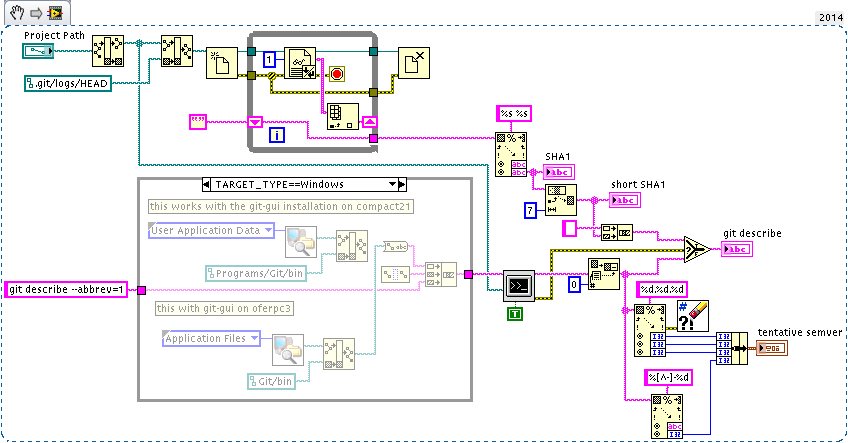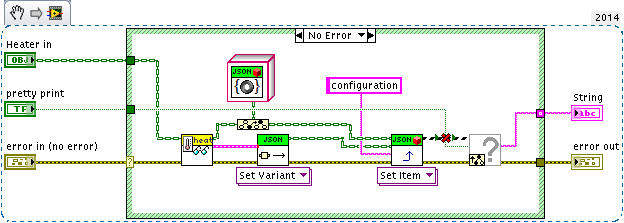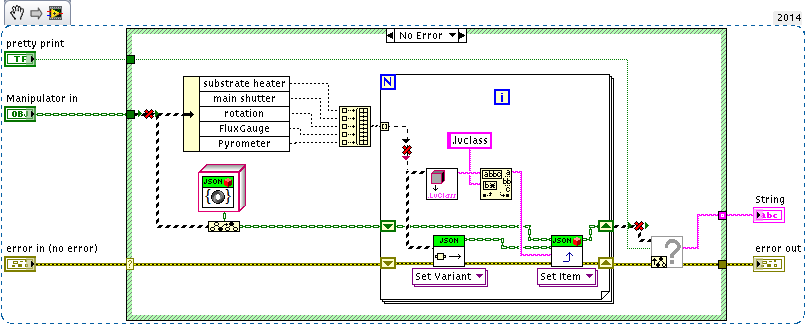-
Posts
583 -
Joined
-
Last visited
-
Days Won
26
Content Type
Profiles
Forums
Downloads
Gallery
Everything posted by ensegre
-

[CR] List all VISA session opened
ensegre replied to Benoit's topic in Code Repository (Uncertified)
FWIW, this VI is saved as being part of a library Instruments.lvlib, missing, and hence broken arrow. -

Active plot order does not match actual plot order
ensegre replied to codcoder's topic in LabVIEW General
CAR 570134. http://forums.ni.com/t5/LabVIEW/bugs-in-Digital-Waveform-Graph/m-p/3245026#M945202 -

Active plot order does not match actual plot order
ensegre replied to codcoder's topic in LabVIEW General
Be that: http://forums.ni.com/t5/LabVIEW/bugs-in-Digital-Waveform-Graph/td-p/3244498 -

Active plot order does not match actual plot order
ensegre replied to codcoder's topic in LabVIEW General
The attached shows what I think is the bug for me. And another one btw related to the always visible plot legend in either classic or tree form. And third, occasionally the Y scale gets wrong but it is not clear to me when. I suspect race conditions while redrawing as I've been able to reproduce the faulty naming only using the event structure; labelling was always correct if I omitted the outer while and event frame, i.e. if I had run the inner code once and again from ready to run VI state. DigitalPlotNames.vi ETA: tried twice to submit it as a service request and got An error ocurred.We are unable to create your Service Request at this time. Please try again later. -

Active plot order does not match actual plot order
ensegre replied to codcoder's topic in LabVIEW General
go ahead, please, I'm kinda busy these days. I sort of remember I have read on some other thread that the digital graph was a nest of bugs, but if we don't report them one by one there is little chance to get them worked. I also had some occasional mess ups of the plotted part, but not that systematically to pinpoint when, and likely the trick of forcing re-autoscale masks them. -

Active plot order does not match actual plot order
ensegre replied to codcoder's topic in LabVIEW General
I've recently ran into this bug, and this workaround seems to make the trick, "most" of the times. LV2015. -
Thresholding and flagging blobs larger than a given pixel size should do it, probably without even needing to subtract a background or filter the image in any way. Check the examples, e.g. "Particle Analysis Report" or "Binary Morphological reconstruction" should give you a headstart.
- 6 replies
-
- image
- bubble detection
-
(and 1 more)
Tagged with:
-

Build Number
ensegre replied to Neil Pate's topic in Application Builder, Installers and code distribution
IC ? -

Build Number
ensegre replied to Neil Pate's topic in Application Builder, Installers and code distribution
Not the point (IIUC?). I'm not interested in the local version of git installed, I'm creating a semver of my code (not of the git package) to be perused by my pre- and post-build actions, like creating VIs supplying the version label, albeit fragile, versioning the build, renaming installer packages, etc., from my commit graph. -

Build Number
ensegre replied to Neil Pate's topic in Application Builder, Installers and code distribution
It occurs to me that git describe sort of does that, returning the distance from the first tagged ancestor. So for my work as single developer, and with enough discipline giving tags in semver format, something like that should do for me: The nuisance is perhaps in the per-machine gymnastics I have to do on windows, depending on which flavor of git is installed/bundled, and whether git is made known to the shell or not (I've seen git-bundle installers which offer not to, in order not to create command conflicts). In my snippet I already figured ways for git-gui, not yet for SourceTree. -
Right, now that I turn to it, I see it. Harder, but perhaps not insurmountable: if I get it correctly, the showstopper is that there is no way to recast the saved class data back into classes by merit of some autodynamical mechanism; the hard way should be to include enough class-discriminating information in the JSON, and supplement a lot of ad hoc fragile code to place it back where needed. Anyway, tedious enough to wonder if it is really preferrable to my original xml dump. and me too.
-
This is the way I'm currently exploring for flattening, and while coding it, it seems to work: make my top device class a child of JSON Object (not Value) for each descendant class, create an override Flatten.vi like this: The first subVI in the chain reads the relevant configuration parameters of my Heater class, and bundles them in a cluster. I just leverage on previous VIs I coded for the configuration UI of the application. For a more complex class, the extension of the exercise seems ok as well: (broken wires here in the snippets are only due to the missing class context) Do you see drawbacks?
-
Coming to this thread with my monstruous configuration which is a blurb of about everything including array of classes with children, which so far I dumped as 50KB+ xml, and starting to have cursive looks at the Lineator too, I'd like to reask the same question of https://lavag.org/topic/16217-cr-json-labview/page-6#entry109240 (2nd part, serialize classes): what exactly do I have to do in order to dump my monster as json and viceversa? Create serializable.lvclas parent of all my other classes, perhaps, with two methods - doing exactly what? Is there an example? Also, suppose the monster still mutates, parameters being added or moved: what recommendations would you give in order to maximise the information which can still be retrieved from an out-of-sync configuration dump? TIA, Enrico
-

Subpanels: what are the rules for order of operations?
ensegre replied to Aristos Queue's topic in LabVIEW General
So it is. The lifeline keeps blinking. It stops only when I press the stop button, or if I reopen the FP of the blinker and abort it (maybe obvious but foolprofing). -

Subpanels: what are the rules for order of operations?
ensegre replied to Aristos Queue's topic in LabVIEW General
Like you say, LV2014SP1 linux. The lifeline of Run VI dies either that Auto Dispose is on or off. -
Not the right references IMHO. In the first, light from the bottom reaches the camera at 90° only because the bubbles act as scatterers. Bubbles cause motion and volume uncertainty, though the perpendicular position eases perspective corrections. If the OP cannot even tolerate the density change due to the addition of a small quantity of dye (which, with the image provided, somehow surprises me), I doubt he can put up with bubbles (or possibly other neutrally buoyant seeds). OTOH, I wonder which precision he aims to with his measurements, and whether his aim is achievable with a generic camera even after a careful geometrical image calibration. The second one doesn't even look like a fluid column, but a led matrix display with a "bubbles" animation mode. Not mentioning, shooting in the far IR or UV where water is not transparent... but then he'd need a specialized sensor, and usually they don't came at such high resolutions. I'm taking this homework (?) for the face value stated: (untampered) water -- then density can change with temperature or (extreme) ambient pressure. Or it is not really water but some acqueos solution which has to be left alone. Density - then this water must have been weighted. Must use a camera from an oddball perspective - hence hardly 1% precision in distance measurements. Meniscus curvature effects not mentioned. If volume changes are small, a setup with big reservoir+narrow riser tube may help.
-
As a matter of fact, I have reorganized the sources a bit, packaged them as a project, and put them under RCS here: https://gitlab.com/enricosegre/LVVideo4Linux
-
dark background, reflection on the interface either from above or below (total internal), perspective reconstruction? Maybe you can get some ideas from this: Tracing the boundaries of materials in transparent vessels using computer vision
-
http://rationalwiki.org/wiki/Not_Even_Wrong#Examples
-
Growing large arrays in loops, which is what you're doing, is slow at any rate, because it involves reallocating and copying at each iteration. I would preallocate the array Y and fill it in the loop with replicas of the basic chunk.
-

inspect queued events in a compiled application
ensegre replied to ensegre's topic in Development Environment (IDE)
So ditto: it is an opaque implementation, there is a critical password-protected subvi, hooovah though about three weeks before me, I don't really need it but why not asking... I kudoed the idea.- 12 replies
-
- event inspector
- dynamical events
-
(and 1 more)
Tagged with:
-

inspect queued events in a compiled application
ensegre replied to ensegre's topic in Development Environment (IDE)
Much plausibly so. By now I've found the reason for my bug, actually elsewhere than in the time difference between the events. Nevertheless, the discussion helped. I have among the rest used what pawhan suggested to exclude simultaneity in the application, and went on pondering the faulty logic to find the true reason. @shaun: yes, it was an academic question... I used queues with timestamped data too, when I needed so.- 12 replies
-
- event inspector
- dynamical events
-
(and 1 more)
Tagged with:
-

inspect queued events in a compiled application
ensegre replied to ensegre's topic in Development Environment (IDE)
Right, that is a quick way and fits well my need of knowing the event fired timestamp; and when it is about filtering out just a couple of events out of many, it's really easy to set up an additional concurrent while loop with an event structure for them two. Thanks. However, remark, this doesn't give access (not that I really need it) to further information visible in the Inspector, such as the event and queue number. I would have expected some queue accessor from the Events Palette, like Preview Queue Element or Get Queue Status for regular queues. The only one of this kind, on the Events palette, is Flush Event Queue.- 12 replies
-
- event inspector
- dynamical events
-
(and 1 more)
Tagged with:
-
Debugging an application of mine, I ran into a very possible occurrence of https://lavag.org/topic/9986-out-of-order-events-is-not-a-bug-sort-of/ . Now, I have reasons to suspect that, due to some race, while in the IDE I have a positive timestamp difference between one certain dynamic and another user event, in the compiled application the two can be nearly simultaneous. Enough for treating the race in the first place, but academically wondering: in the IDE I can help myself out with the Event Inspector; can anyone suggest a way to filter and display information from the event queues in the apps? Looking at the GUI of the Event Inspector, that looks like one of these many tools written in G, modulo using password protected blocks, I haven't been diligent enough to search for its whereabouts yet. LV2014.1. Otherwise, for the present case, I suppose that just sequencing the event generating blocks together with a Clock Tick and displaying the results may do, for the debugging I need. TIA, Enrico
- 12 replies
-
- event inspector
- dynamical events
-
(and 1 more)
Tagged with:
-

LabVIEW RS232 Serial Read Write Application Com Port Freeze Up / Stuck
ensegre replied to Tim888's topic in LabVIEW General
Another potential factor is EMI. Supposedly interference may set those chips in odd modes, so improving grounding and shielding might help. But all together, I think the cheapest and fastest option is to try out different usb-232 dongles.







